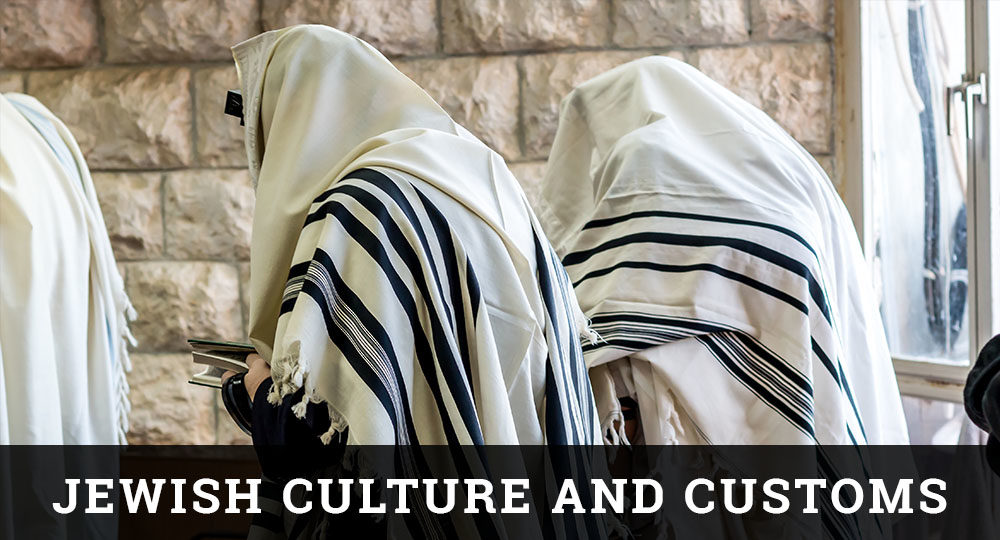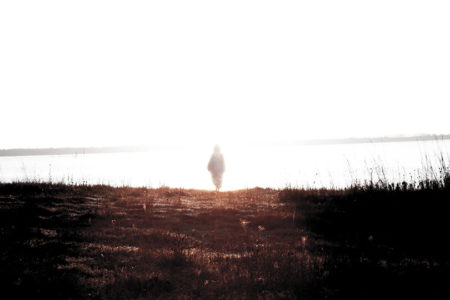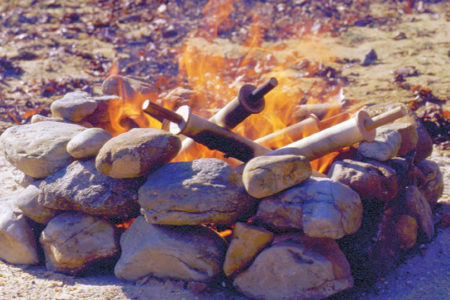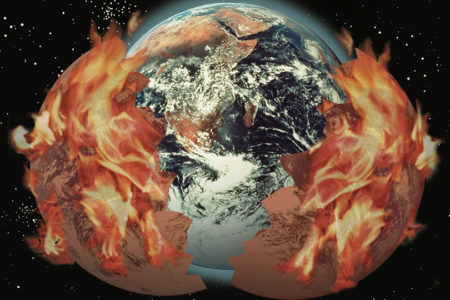The Pioneering Spirit
The pioneering spirit has always captivated me. Remnants of wagon trails can still be seen in various Western states. The courage and tenacity displayed by those trailblazers are lessons for all of us. Yet, as much as I admire those brave Americans who ventured West, it boggles my mind to think of those who traveled, not across our country, but across the sea!
My grandparents left the Pale of Settlement (covered in the last issue of Israel My Glory) as teenagers—a tiny part of the largest group of immigrants in U. S. history. More than two million Jewish people, primarily from Eastern Europe, sought refuge in the Goldenah Medina (Golden Land) during that time. One of the greatest Yiddish writers, Sholom Aleichem, gives us some insight: “On the train to the border [to take the ship to America] when we hear the word ‘America,’ we rejoice. ‘So you are going to New York!’ ‘We are going to Philadelphia.’ ‘What is Philadelphia?’ ‘A town like New York.’ ”
What actually happened to all of those immigrant people? Where did they go? What did they do? How did they live?
From today’s perspective, we may have a somewhat romantic view of the monumental voyage made by our forebears. In reality, it was a dangerous and frightening journey made by many adventurous and courageous people. Most of the Jewish immigrants arrived from Europe through Ellis Island, a little piece of land located in New York harbor, about a mile southwest of Manhattan. Now a museum, it stands as a testament to the twelve million people who were processed there over a sixty-year period.
Processing upon arrival often took several days. The most dreaded aspect of the ordeal was the eye exam. Inspectors checked the eyes for a disease called trachoma, a form of conjunctivitis. Failing this test meant immediate return to Europe. The thought of being sent back to the pogroms was horrifying. Ellis Island came to be known as the Isle of Tears because of the heart-wrenching situations that caused such dreaded news. Many who failed the exam or did not have the necessary documentation tried to escape by jumping into the harbor and swimming to New York. Many suicides were attempted, and some were successful. If papers were approved and physicals were passed, the new arrivals could set foot—finally and legally—in America.
Settling into American life usually meant finding your way to the lower east side of the borough of Manhattan. Bordering the Brooklyn Bridge on the south, 14th Street on the north, Broadway on the west, and the East River on the east, this environment was a long way from the shtetls (small towns or villages) left behind. Everything was different—language, population density, means of transportation, food, clothing. One new immigrant wrote, “I’d never had ice cream before. It was new to me in America. We walked and ate. When we passed girls, my brothers wanted to give them a taste of our ice cream. The girls refused. I felt as if on coals. No word could I think of but ‘greenhorn.’”* Another immigrant commented on a woman chewing gum as “making a queer motion with the muscles of her mouth.” He wondered what kind of mouth disease she had.
Often one family member would come first, then work and save to finance the trip for the rest of the family. Needless to say, this created great hardship; at times the task was impossible. Coming to the aid of some of these unfortunates were philanthropic organizations, which had been started by wealthy benefactors—immigrants themselves who had prospered in this new land and desired to help their people. Landmanschaften (Jewish brotherhood lodges) were also formed to help minister to these new arrivals. The landsman was always there to try to help.
The large influx of immigrants corresponded to a time of U. S. industrial expansion. Jobs were plentiful—but very low paying. A phenomenon called the sweatshop emerged. Lowly workers toiled under terrible conditions for 14 to 16 hours a day, earning $4 to $8 a week. “Sweatshop poets” emerged to elucidate their feelings.
I work, and I work, without
rhyme, without reason—
produce, and produce, and
produce without end.
For what? And for whom? I
don’t know, I don’t wonder
—since when can a whirling machine comprehend?
No feelings, no thoughts, not
the least understanding;
this bitter, this murderous
drudgery drains
the noblest, the finest, the
best and the richest,
the deepest, the highest that
living contains.
This was particularly true in the garment industry, which employed many Jewish workers. Terrible working conditions fostered disease and danger, many factories being nothing more than firetraps and other types of disasters waiting to happen. The most infamous tragedy was the Triangle Shirtwaist Factory disaster in 1911, in which fire swept through a building whose doors had been locked to keep the workers from getting out. One hundred and forty-six people died in that fire. Tuberculosis was a common occurrence, resulting from the pace of the work and the conditions endured.
Some Jewish people traveled south and west to other urban areas to be near families or hoping for better opportunities. All four of my grandparents ventured to Cleveland, Ohio. My father’s mother worked in a cigar factory for $5 a week, while my grandfather used his skill as a tailor to do piecework. Later he parlayed that skill to open his own dry-cleaning store. It was through the Jewish immigrants from Russia that labor was organized to fight the poor conditions and eventually to form the Amalgamated Clothing Workers of America and the International Ladies Garment Workers Union, which helped not only the Jewish labor force, but all laborers.
Life was not all misery, however. America benefited from the presence of these newcomers, who usually tried to improve whatever situation in which they found themselves. Yiddish newspapers, most notably The Jewish Daily Forward, provided world news and articles on religion, fashion, poetry, current events, and trends. One such trend that began during this period, as reported in The Forward, was expressed in a new Yiddish word, oysesn, or eating out—not at the home of a relative or a friend, but in an actual restaurant. This was something unheard of in the old country. The newspaper also offered the Bintel Brief—letters to the editor—which gave tremendous insight into the lives of the immigrants. Yiddish theater provided entertainment, a temporary respite from the hardships of daily life.
At the height of this immigration came the rise of the resorts. Hotels located in the Catskill Mountains in upstate New York offered clean air and kosher meals, as well as the joy of getting out of the hot, muggy city. It was from the dinner fare served to the Jewish clientele that these resorts came to be known as the Borscht Belt. Years later the pattern of these entertainment spas was modeled in Miami Beach, Florida.
Millions of Jewish people, myself included, thank our sovereign God for bringing our relatives to America’s shores. Here my people were given opportunities to make a new life for themselves—and here many have been given the opportunity to receive eternal life.






